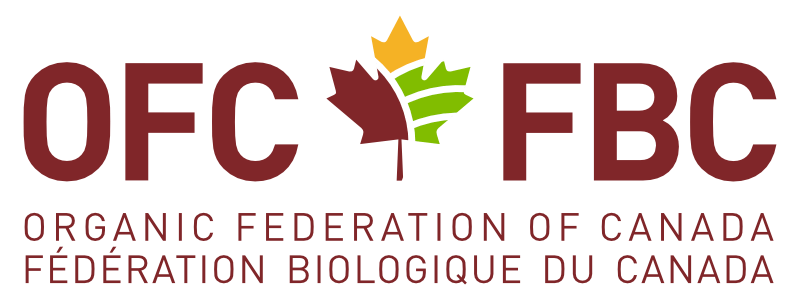Identification of organic products in storage #
Are signs identifying organic products as organic required on a storage unit if non-organic products also in storage are not GE? (620) July 22, 2024
No. Identification as organic is only required on storage units when there is a risk of GE contamination (32-310 8.1.5 g)). However, an identification system is always required to distinguish between organic and non-organic products in any storage space (4.4.3).
#
Staff training #
Are CBs required to verify that staff working in facilities where both organic and conventional foods are processed have the necessary training to result in compliance with the standard? (130)
CB’s are required to verify compliance with the standard. If in the course of inspecting a facility, it becomes apparent that the staff responsible for maintaining organic integrity lack the necessary training needed to differentiate between organic and conventional processes, this could be the basis of a report of non-compliance. See 32.310, 4.4 and 8.
Irradiation (X-rays, ultraviolet radiation, microwave) #
Is ultraviolet radiation of milk, cheese and fruit juice acceptable under the COS? What about tree sap or packaging? (152, 338, 419)
Near and medium ultraviolet (UV) rays are classified as non-ionizing radiation and can be used to treat milk, cheese and juices. But neither near nor medium ultraviolet rays can be used to boil (7.2.14) or sterilize (7.2.12.2) tree sap, such as maple or birch. Far ultraviolet radiation cannot be used on organic products. All forms of ultraviolet radiation can be used to sterilize packaging before it is filled with a product.
X-Rays for inspection purposes #
Is the use of x-rays permitted for inspection purposes, such as detection of foreign materials, during the preparation of organic products? (556) 7 Oct 2022
Yes, providing it is for inspection purposes only, and does not reach levels of irradiation treatment.
UV-C light use in product preparation and handling #
Can UV-C light be used to treat organic products, such as frozen foods, during preparation and handling? (560) 19 December 2022
No. UV-C light in direct contact with organic products as a microbial sanitation treatment is not permitted. A persuasive petition for the inclusion of UV-C treatment in the Canadian Organic Standards would need to be submitted to the CGSB Technical Committee on organic agriculture for consideration. UV-C light treatment of organic contact surfaces such as equipment or packaging (prior to packaging organic product) is permitted.
Water – Filtration #
Can water that has been processed through an alkaline filtration system be used in the preparation or processing of an organic food product? (185)
The resulting water is acceptable if it falls within Health Canada’s Guidelines for Drinking Water; has a pH 6.5 to 8.5; and no prohibited substances have been added to the water or prohibited processes have been used.
8.2 Cleaning, disinfecting and sanitizing #
Water – Product preparation and vegetable rinsing #
What are the requirements for the quality of water used to wash organic vegetables or prepare organic products? (128, 5)
Water must meet the requirements for potability as per local, provincial or federal authorities. When water is in contact with an organic product, the chlorine concentration must not exceed the levels permitted in municipal drinking water systems and rinsing is not required (Table 7.3).
Cleaners – Milking equipment #
What is the distinction between acceptable cleaning agents for milking equipment on farms vs. those used in processing facilities? (209)
8.2 gives direction for cleaning food contact surfaces which would be appropriate both on dairy farms and in off-farm dairy processing facilities.
Cleaning – Milk trucks #
Is it necessary to wash milk trucks at a processing facility under the supervision of a certifying body in order to maintain certification of the milk? (108)
No. There is no requirement to wash bulk milk trucks specifically at a processing facility placed under the supervision of a certifying body. In order to comply with the standard, documentation that substances used in the cleaning process have been removed, must be maintained to demonstrate compliance to 8.2.
8.3 Facility pest management and post‐harvest management #
Pest control – Bait station location #
When a pesticide not listed in the PSL is used in a baited station clamped to the inside wall of a facility preparing or storing organic products, is having it in the bait station sufficient to satisfy 8.3.3 requirement? (38)
No. Only pesticides listed in PSL Table 8.3 may be used in the interior of a facility when organic products or packaging materials are present. This applies even if the pesticide is contained within a bait station and there is no potential contact between the pesticide and the organic products or packaging.
Pest management – indoor/outdoor #
Does 8.3.3 apply to pest control substances used inside facilities or to those used on the exterior? (212)
8.3.3 applies to both indoor and exterior pest control for all operations that grow, handle, store and transport organic products. It is essential that pest control around farm buildings and storage areas does not compromise organic product integrity or the surrounding farm environment. 8.3.3 does not apply to exterior pest control at facilities when it is unlikely that organic product integrity will be compromised and unlikely that the surrounding environment will be contaminated (e.g.,, manufacturing facilities in industrial parks).The indoor/outdoor requirement is stated in 8.3.3 of 310 and reiterated in 8.1.1 a) of the PSL.
Pest control in food processing facilities #
Clause 8.3.2 states that Table 8.2 substances can be used in food processing facilities to control pests. Can substances listed in Table 4.2 (column 2) (e.g. pheromones, sodium tetraborate) also be used? (392)
No. Only substances in the Table 8.2 can be used to control pests in food processing facilities. Substances in Table 4.2 (column 2) are strictly for crop production. Please refer to CAN/CGSB-32.310 clause 8.3.3 for alternative pest control options for food processing facilities.

